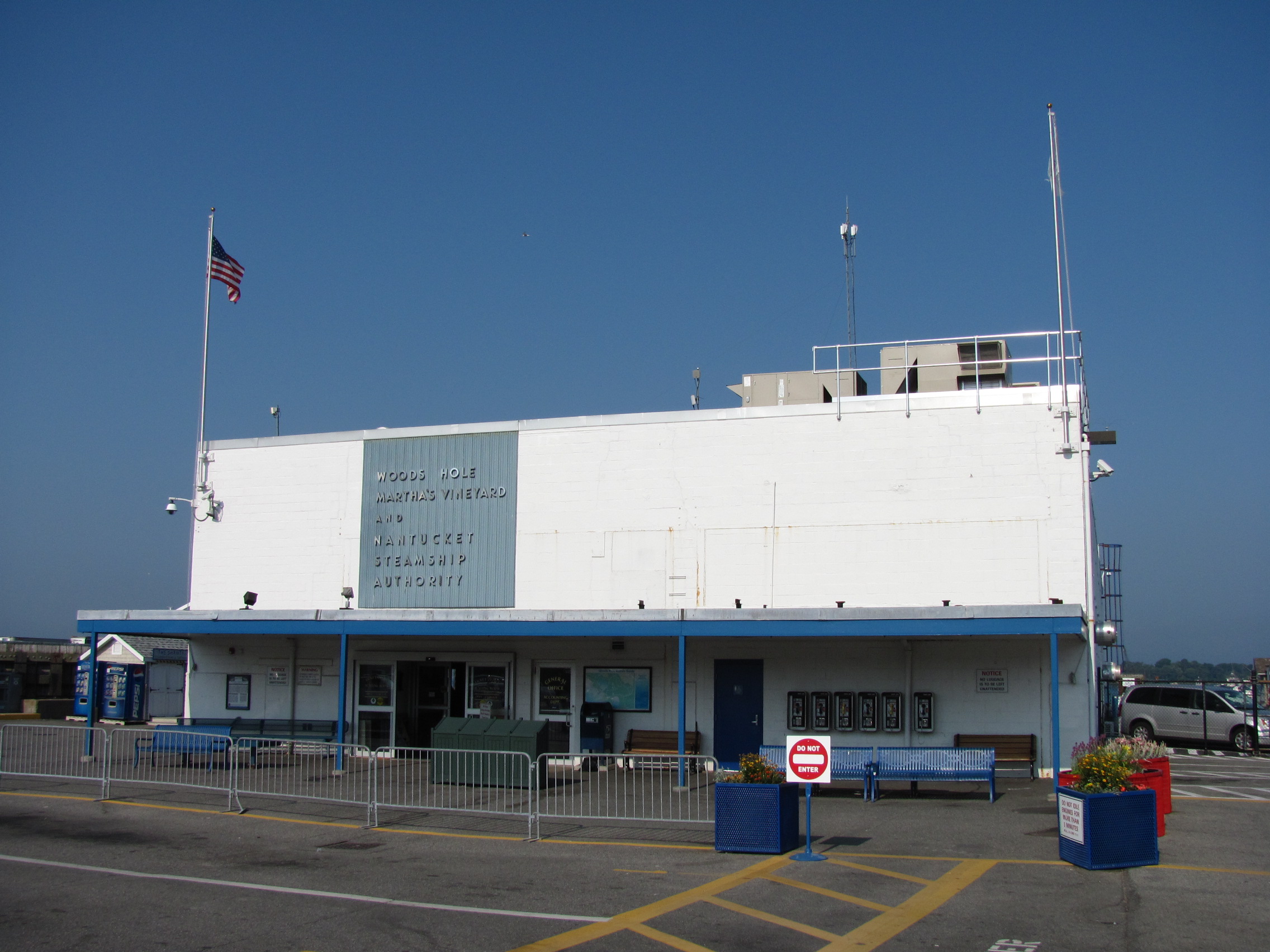|
Gay Head (steamboat)
The ''Gay Head'' was a sidewheel steamer operating as a ferry serving the islands of Martha's Vineyard and Nantucket during the end of the nineteenth century and the beginning of the twentieth. It was named after the town of Gay Head, Massachusetts, later renamed Aquinnah. Construction The ''Gay Head'' was built in 1891 in Philadelphia for the New Bedford, Martha's Vineyard, and Nantucket Steamboat Co. It was 701 tons, 203 feet long, 34 foot beam, a draft of 5½ feet, with encased paddlewheels. The engine was built by Pusey & Jones Co. in Philadelphia.Turner, Harry B. ''The Story of the Island Steamers'' (The Inquirer and Mirror Press, 1910) It was the largest sidewheeler ever operated by the company.Vineyard Gazette Online [Baidu] |
Transportation In Dukes County, Massachusetts
Transport (in British English), or transportation (in American English), is the intentional movement of humans, animals, and goods from one location to another. Modes of transport include air, land (rail and road), water, cable, pipeline, and space. The field can be divided into infrastructure, vehicles, and operations. Transport enables human trade, which is essential for the development of civilizations. Transport infrastructure consists of both fixed installations, including roads, railways, airways, waterways, canals, and pipelines, and terminals such as airports, railway stations, bus stations, warehouses, trucking terminals, refueling depots (including fueling docks and fuel stations), and seaports. Terminals may be used both for interchange of passengers and cargo and for maintenance. Means of transport are any of the different kinds of transport facilities used to carry people or cargo. They may include vehicles, riding animals, and pack animals. Vehicles may inclu ... [...More Info...] [...Related Items...] OR: [Wikipedia] [Google] [Baidu] |
Ships Built In Philadelphia
A ship is a large watercraft that travels the world's oceans and other sufficiently deep waterways, carrying cargo or passengers, or in support of specialized missions, such as defense, research, and fishing. Ships are generally distinguished from boats, based on size, shape, load capacity, and purpose. Ships have supported exploration, trade, warfare, migration, colonization, and science. After the 15th century, new crops that had come from and to the Americas via the European seafarers significantly contributed to world population growth. Ship transport is responsible for the largest portion of world commerce. The word ''ship'' has meant, depending on the era and the context, either just a large vessel or specifically a ship-rigged sailing ship with three or more masts, each of which is square-rigged. As of 2016, there were more than 49,000 merchant ships, totaling almost 1.8 billion dead weight tons. Of these 28% were oil tankers, 43% were bulk carriers, and 13% were cont ... [...More Info...] [...Related Items...] OR: [Wikipedia] [Google] [Baidu] |
Steamships Of The United States
A steamship, often referred to as a steamer, is a type of steam-powered vessel, typically ocean-faring and seaworthy, that is propelled by one or more steam engines that typically move (turn) propellers or paddlewheels. The first steamships came into practical usage during the early 1800s; however, there were exceptions that came before. Steamships usually use the prefix designations of "PS" for ''paddle steamer'' or "SS" for ''screw steamer'' (using a propeller or screw). As paddle steamers became less common, "SS" is assumed by many to stand for "steamship". Ships powered by internal combustion engines use a prefix such as "MV" for ''motor vessel'', so it is not correct to use "SS" for most modern vessels. As steamships were less dependent on wind patterns, new trade routes opened up. The steamship has been described as a "major driver of the first wave of trade globalization (1870–1913)" and contributor to "an increase in international trade that was unprecedented in human ... [...More Info...] [...Related Items...] OR: [Wikipedia] [Google] [Baidu] |
Steamboats Of Nantucket Sound
A steamboat is a boat that is propelled primarily by steam power, typically driving propellers or paddlewheels. Steamboats sometimes use the prefix designation SS, S.S. or S/S (for 'Screw Steamer') or PS (for 'Paddle Steamer'); however, these designations are most often used for steamships. The term ''steamboat'' is used to refer to smaller, insular, steam-powered boats working on lakes and rivers, particularly riverboats. As using steam became more reliable, steam power became applied to larger, ocean-going vessels. Background Limitations of the Newcomen steam engine Early steamboat designs used Newcomen steam engines. These engines were large, heavy, and produced little power, which resulted in an unfavorable power-to-weight ratio. The Newcomen engine also produced a reciprocating or rocking motion because it was designed for pumping. The piston stroke was caused by a water jet in the steam-filled cylinder, which condensed the steam, creating a vacuum, which in turn cause ... [...More Info...] [...Related Items...] OR: [Wikipedia] [Google] [Baidu] |
Ferries Of Massachusetts
A ferry is a ship, watercraft or amphibious vehicle used to carry passengers, and sometimes vehicles and cargo, across a body of water. A passenger ferry with many stops, such as in Venice, Italy, is sometimes called a water bus or water taxi. Ferries form a part of the public transport systems of many waterside cities and islands, allowing direct transit between points at a capital cost much lower than bridges or tunnels. Ship connections of much larger distances (such as over long distances in water bodies like the Mediterranean Sea) may also be called ferry services, and many carry vehicles. History In ancient times The profession of the ferryman is embodied in Greek mythology in Charon (mythology), Charon, the boatman who transported souls across the River Styx to the Greek underworld, Underworld. Speculation that a pair of oxen propelled a ship having a water wheel can be found in 4th century Roman literature "''Anonymus De Rebus Bellicis''". Though impractical, ther ... [...More Info...] [...Related Items...] OR: [Wikipedia] [Google] [Baidu] |
Paddle Steamers
A paddle steamer is a steamship or steamboat powered by a steam engine that drives paddle wheels to propel the craft through the water. In antiquity, paddle wheelers followed the development of poles, oars and sails, where the first uses were wheelers driven by animals or humans. In the early 19th century, paddle wheels were the predominant way of propulsion for steam-powered boats. In the late 19th century, paddle propulsion was largely superseded by the propeller, screw propeller and other marine propulsion systems that have a higher efficiency, especially in rough or open water. Paddle wheels continue to be used by small, pedal-powered paddle boats and by some ships that operate tourist voyages. The latter are often powered by diesel engines. Paddle wheels The paddle wheel is a large steel framework wheel. The outer edge of the wheel is fitted with numerous, regularly spaced paddle blades (called floats or buckets). The bottom quarter or so of the wheel travels under wat ... [...More Info...] [...Related Items...] OR: [Wikipedia] [Google] [Baidu] |
Nantucket (steamboat)
The ''Nantucket'' was a sidewheel steamer operating as a ferry serving the islands of Martha's Vineyard and Nantucket during the end of the nineteenth century and the beginning of the twentieth century. On the Vineyard it docked at Cottage City (later Oak Bluffs, Massachusetts), Vineyard Haven, and the West Chop Wharf. The ''Nantucket,'' a 629-ton vessel, was built in 1886 in Wilmington, Delaware for service with the New Bedford, Martha's Vineyard, and Nantucket Steamboat Co. fleet, later reorganized as the Steamship Authority. According to a 1961 ''Vineyard Gazette'' article, the ''Nantucket'' "had decorated paddleboxes that made large, rhythmic and beautiful half-circles on the sides."Vineyard Gazette Online [...More Info...] [...Related Items...] OR: [Wikipedia] [Google] [Baidu] |
Pusey & Jones
The Pusey and Jones Corporation was a major shipbuilder and industrial-equipment manufacturer. Based in Wilmington, Delaware, it operated from 1848 to 1959. Shipbuilding was its primary focus from 1853 until the end of World War II, when the company converted the shipyard to produce machinery for paper manufacturing. The yard built more than 500 ships, from large cargo vessels to small warships and yachts, including ''Volunteer'', the winner of the 1887 America’s Cup. History The company began in 1848, when Joshua L. Pusey and John Jones formed a partnership in Wilmington, Delaware, to run a machine shop in space rented from a whaling company. The shipyard sat between the Christina River and the main line of the Pennsylvania Railroad. In 1851, Edward Betts and Joshua Seal, who were operating an iron foundry in Wilmington, purchased an interest in the business. The name of the company became Betts, Pusey, Jones & Seal. In 1854, Pusey and Jones built the first U.S. iron-hulled s ... [...More Info...] [...Related Items...] OR: [Wikipedia] [Google] [Baidu] |
Aquinnah, Massachusetts
Aquinnah ( wam, Âhqunah) is a town located on the western end of Martha's Vineyard island, Massachusetts. From 1870 to 1997, the town was incorporated as Gay Head. At the 2020 U.S. census, the population was 439. Aquinnah is known for its beautiful clay cliffs and natural serenity, as well as its historical importance to the native Wampanoag people. In 1965, Gay Head Cliffs were designated as a National Natural Landmark by the National Park Service. Aquinnah is celebrated as a center of Wampanoag culture and a center of pride and tradition among members of the federally recognized Wampanoag Tribe of Gay Head. They make up about one-third of the town's voters and are one of two federally recognized tribes of Wampanoag people in Massachusetts. This area is one of the earliest sites of whaling, with the Wampanoag harpooning their catch long before commercial whaling became the major maritime industry of Martha's Vineyard, Nantucket, and New Bedford, Massachusetts in the 19th-centur ... [...More Info...] [...Related Items...] OR: [Wikipedia] [Google] [Baidu] |
Steamship Authority
The Woods Hole, Martha's Vineyard and Nantucket Steamship Authority, doing business as The Steamship Authority (''SSA''), is the statutory regulatory body for all ferry operations between mainland Massachusetts and The Islands (Massachusetts), the islands of Martha's Vineyard and Nantucket, as well an operator of ferry services between the mainland and the islands. It is the only ferry operator to carry automobiles to and from the islands. The Authority also operates several freight vessels, thus serving as the main link for shipping any commercial goods that are not transported using the airports on Nantucket Memorial Airport, Nantucket or Martha's Vineyard Airport, Martha's Vineyard. History Early Nantucket service The Steamship Authority's roots trace back to the 1833-established Nantucket Steamboat Company. Demand for regular steamship service between Cape Cod and Nantucket increased following the opening of the Cape Cod Railroad's Hyannisport station in 1854. The same year, ... [...More Info...] [...Related Items...] OR: [Wikipedia] [Google] [Baidu] |







